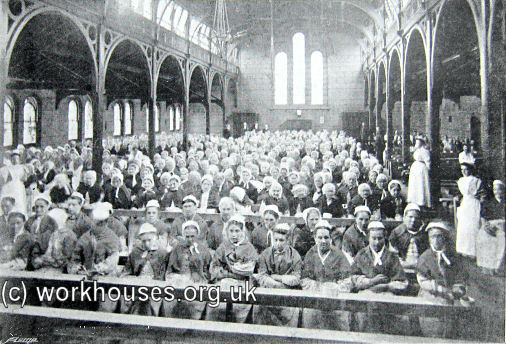We have to be honest, we usually find ourselves at the Geffrye Museum only around Christmas time. And for this, we are ashamed. For on a recent visit on a sunny spring day, not only did we realise that the building and its gardens are glorious in the sunshine, but it's exhibitions and displays are fascinating all year round. On this particular trip we were there to see 'Homes for the Homeless: Seeking Shelter in Victorian London' exhibition because, well, you know how we feel about the Victorians. (We love them in case that wasn't clear). What we found was a thoughtful, beautiful designed, multi-faceted exhibition that brought home the realities of life in the nineteenth century city.
| The Pinch of Poverty - Thomas Benjamin Kennington 1891 |
 |
| Meal-time at Holborn workhouse, 1885 |
 |
| Corridor at a casual ward, early 20th c. |
 |
| Sleek, graphics-dense exhibition design |


I do enjoy your blog. Living in the Midlands I often miss out on many of the exhibitions and collections at London's smaller museums. I've always wanted to check out The Geffrye Museum and you've just given me the kick I need to finally get round to it.
ReplyDeleteAs another big fan of the Victorians (who isn't?), I enjoyed the recent BBC series that sent 6 celebs into '24 Hours in the Past' to experience different jobs and living conditions of the Victorian working class. I thought it brought history to life in a really exciting way for a broad audience - as opposed the usual 'middle-aged, middle-class, expert tells history in a removed academic format'. I have a particular issue with some of those history/culture programmes because I think their high brow approach excludes so many. But I'd be interested to know what you thought of the format - Did you watch it? What did you think?